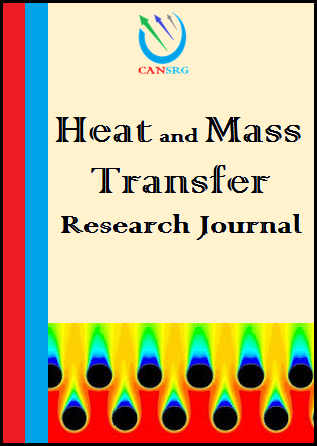
CanSRG

Heat and Mass Transfer Research Journal (HMTRJ)
Research Article
Experimental study of thermosyphon performance using R 407C
1Mechanical Department, Faculty of Engineering Zagazig
2UniversityMechanical Department, Faculty of Industrial Education Suez University
Submitted: July 8, 2018; Revised: September 17, 2018; Accepted: October 26, 2018
Abstract
An experimental investigation was conducted to study the heat transfer performance of a two-phase closed thermosyphon for R 407C. The experiments show the effect of varying the heat flux, inclination angle and the filling ratio on the characteristics of the performance of thermothyphon. A copper tube of dimensions 1500 mm length and 25 mm inside diameter and 2 mm thickness is used as the thermosyphon, the selected heat flux varied from 1155 to 2853 W/m2 and the selected filling ratios were 35, 50, 60 and 80%. The thermosyphon inclination angle was changed from 0o to 90o at all filling ratios and heat fluxes. The experimental results proved that the inclination angle had an important effect on the thermal performance of the thermosyphon. The maximum heat transfer occurred at vertical inclination angle (θ = 90o), and decreased as decreasing the inclination angle. The maximum performance of the thermosyphon value exists at a filling ratio of 50 % and inclination angle (θ = 90o).
Keywords
Two-phase thermosiphon; Filling ratio; Heat transfer; Inclination angle.
Downlaod Full Text >>
This work is licensed under a Creative Commons Attribution 4.0 International License.